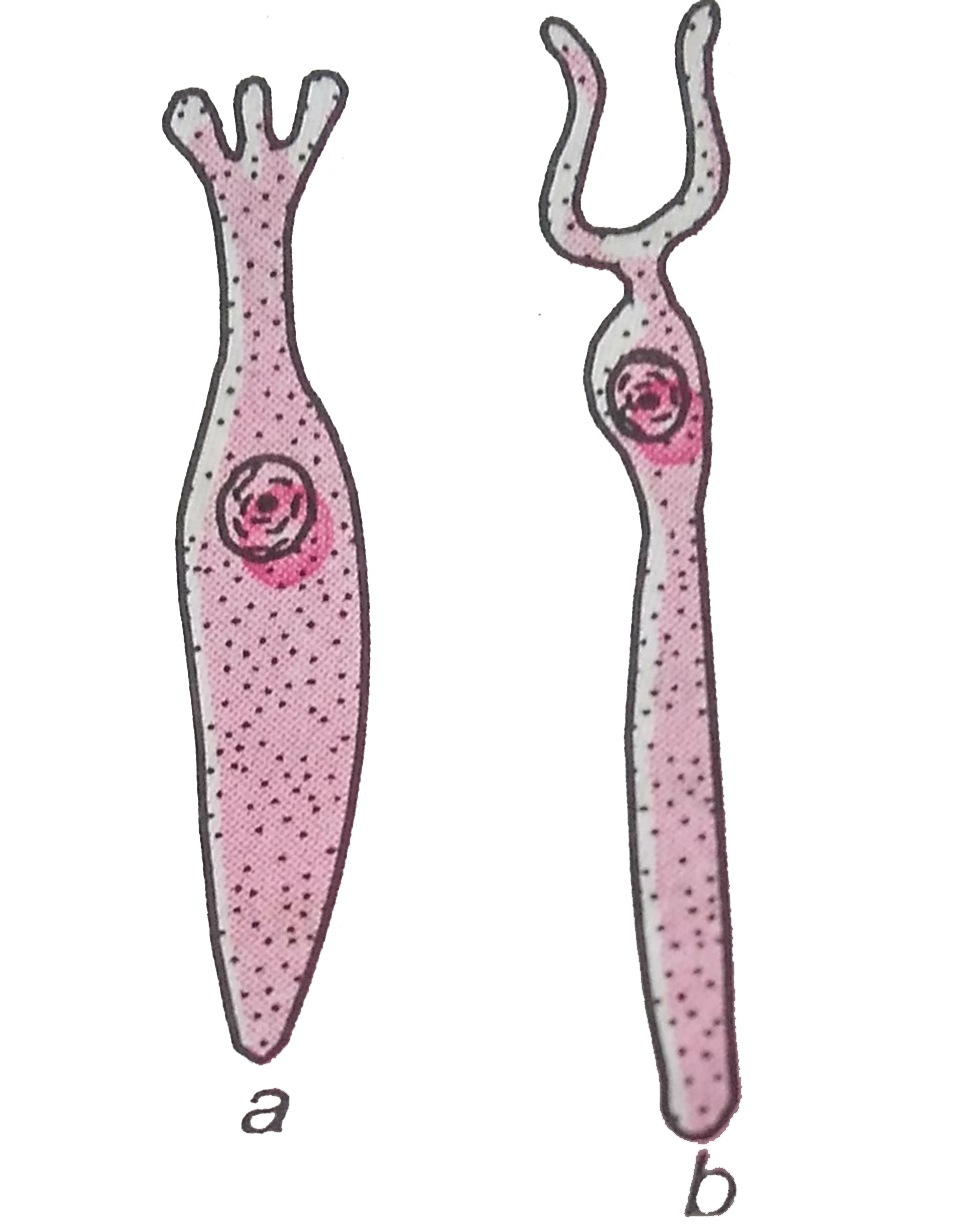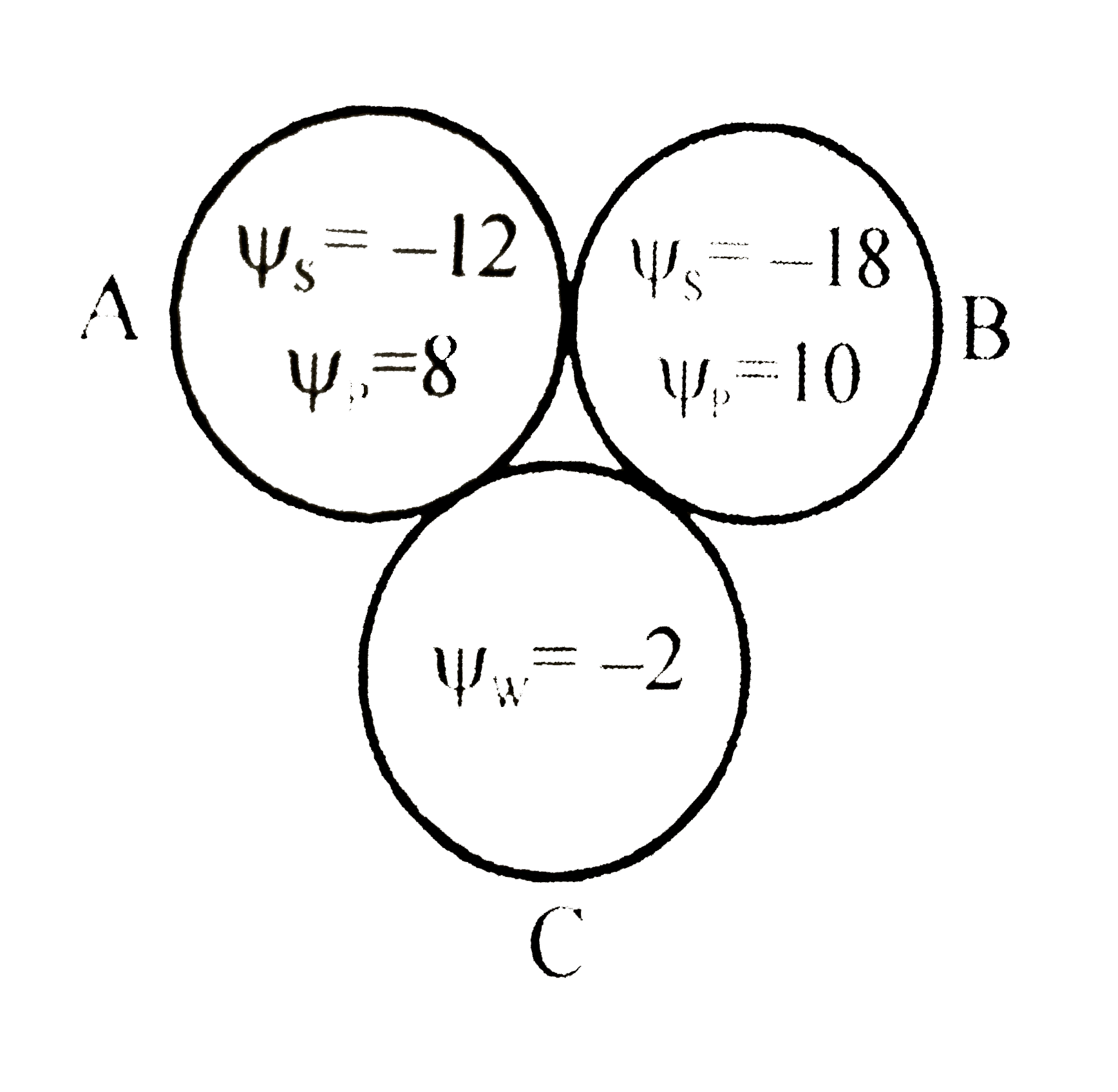Cell A and B are adjacent to each other . Analyse the below table and the choose the correct result.
ParametersCell ACells BOsmotic pressure 108Turgor pressure 84
Water will move from Cell B to A
Water will show no movement .
Water will move from Cell A to B
Solute will move across both the cells.
The correct Answer is:C
To solve the problem regarding the movement of water between Cell A and Cell B based on the given osmotic and turgor pressures, we can follow these steps:
Step 1: Understand the Parameters
We have two parameters provided in the table:
- Osmotic Pressure: This is the pressure required to prevent the flow of water across a semipermeable membrane due to osmosis.
- Turgor Pressure: This is the pressure exerted by the fluid (usually water) inside the cell against the cell wall.
Step 2: Identify the Values
From the table, we have:
- For Cell A:
- Osmotic Pressure = 10
- Turgor Pressure = 8
- For Cell B:
- Osmotic Pressure = 8
- Turgor Pressure = 4
Step 3: Calculate the Pressure Deficit (DPD)
The formula for calculating the Deficit Pressure Deficit (DPD) is:
DPD=Osmotic Pressure−Turgor Pressure
Now, we will calculate DPD for both cells.
- For Cell A:
DPDA=Osmotic PressureA−Turgor PressureA=10−8=2
- For Cell B:
DPDB=Osmotic PressureB−Turgor PressureB=8−4=4
Step 4: Analyze the DPD Values
Now we have:
- DPD of Cell A = 2
- DPD of Cell B = 4
Water moves from an area of lower DPD to an area of higher DPD. Therefore, since Cell A has a lower DPD (2) compared to Cell B (4), water will move from Cell A to Cell B.
Step 5: Conclusion
The correct result is that water will move from Cell A to Cell B.
---
We have two parameters provided in the table:
- Osmotic Pressure: This is the pressure required to prevent the flow of water across a semipermeable membrane due to osmosis.
- Turgor Pressure: This is the pressure exerted by the fluid (usually water) inside the cell against the cell wall.
From the table, we have:
- For Cell A:
- Osmotic Pressure = 10
- Turgor Pressure = 8
- For Cell B:
- Osmotic Pressure = 8
- Turgor Pressure = 4
The formula for calculating the Deficit Pressure Deficit (DPD) is:
DPD=Osmotic Pressure−Turgor Pressure
DPDA=Osmotic PressureA−Turgor PressureA=10−8=2
DPDB=Osmotic PressureB−Turgor PressureB=8−4=4
Now we have:
- DPD of Cell A = 2
- DPD of Cell B = 4
The correct result is that water will move from Cell A to Cell B.
Topper's Solved these Questions
Similar Questions
Knowledge Check
Determine the process that will occur based on the given information regarding two adjacent cells .
ParametersCell XCell YOsmotic pressure8 units12 unitsTurgor pressure 6 units8 unitsAWater will move from Cell Y to XBWater will show no movement .CWater will move from Cell X and YDSolute will move across both the cells.Examnine the cells a and b. select the correct option
 ACell a is rod cell found evenly all over retinaBCell a is cone cell more concentrated in fovea centralisCCell b is concrened with colour vision in bright lightDCell a is sensitive to low light intensities.
ACell a is rod cell found evenly all over retinaBCell a is cone cell more concentrated in fovea centralisCCell b is concrened with colour vision in bright lightDCell a is sensitive to low light intensities.Osmotic pressure of a cell is zero when
AT.P. is maximumBD.P.D. is maximumCT.P. is zeroDNot possible.
Two adjacent plant cells are depicted below. A few statements regarding them are made. Mark the correct statement.

View SolutionChoose the correct path of water flow in three adjacent cells :-

View SolutionTwo cells A and B are contiguous. Cell A has osmotic pressure 10 atm, turgor pressure-7 atm and diffusion pressure deficit 3 atm. Cell B has osmotic pressure 8 atm, turgor pressure 3 atm and diffusion pressure deficit 5 atm. The result will be
View SolutionIn which condition the Turgor pressure of the cell becomes equal to the osmotic pressure :–
View SolutionPressure potential of a plant cell and its turgor pressure are
View Solution
